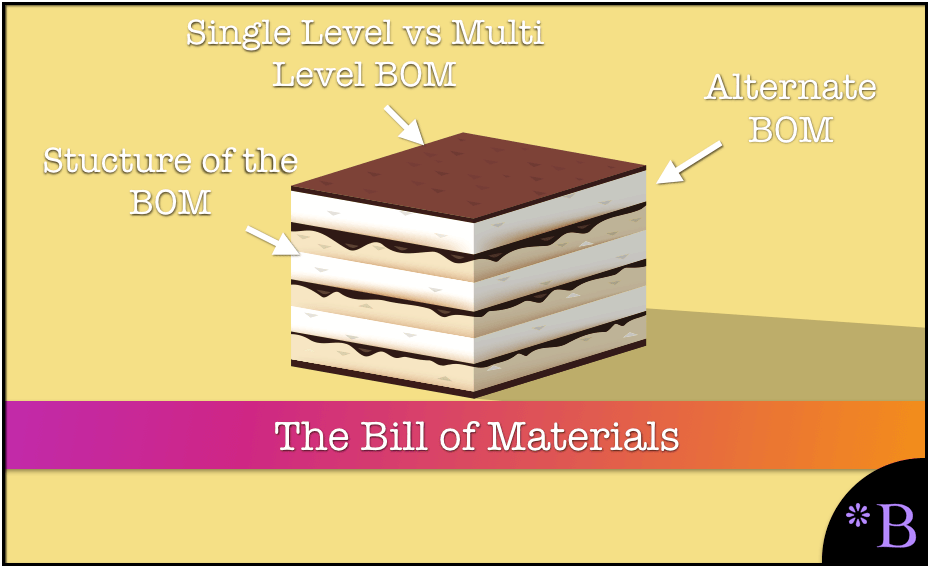How to Understand the BOM – Bill of Material in APO
Executive Summary
- The BOM is a critical component in APO.
- This includes the BOM structure, the material BOM, the alternate BOM, single level BOMs, assembly BOMs, phantom assembly BOMs, and sales order BOMs.

Introduction to the BOM
The BOM is one of the most critical master data objects in supply chain systems. You will learn about the different types of BOMs.
Our References for This Article
If you want to see our references for this article and other related Brightwork articles, see this link.
Notice of Lack of Financial Bias: We have no financial ties to SAP or any other entity mentioned in this article.
What is the BOM?
A formally structured list of the components that make up a product or assembly. The list contains the object number of each component. Depending upon the industry sector, they can also be called recipes or lists of ingredients
Structure of a BOM
The BOM is made up of the following categories of data.
- Material
- Plant
- Revision Level
- BOM
- Alternative
- Usage
- Technical Type
- BOM Group
Material BOM
For standard production and material consumption.
Alternate BOM
One product can be manufactured from alternate combinations of materials depending upon the quantity to be produced (lot size). Some alternate BOMs represent the product. The difference between alternative BOMs is only small. Usually, the difference is in the number of individual components.
When To Create?
When there are multiple ways of making an item. A configurable PC is a good example. When you produce the computer to the individual requirements, you use a variant configuration in the SAP system.
Single Level BOMs
Describes one or more assemblies using component quantities. The term single level BOM will be shortened to BOM. In practice, a single level BOM is often a collection of standardized assemblies. You can use single level BOM’s to define one time solutions for recurring tasks.
Assembly BOMs
A group of semi-finished products or parts that are assembled and form a finished product or a component of a finished product.
Phantom Assembly BOMs
These are a logical rather than a functional grouping of materials. These materials are grouped to form an assembly.
What Are Sales Order BOMs?
In improving customer focus, it is even more important for businesses working with make to order production to be able to react quickly and flexibly to the wishes of the customer. Most products, particularly in plant engineering and construction and mechanical engineering, are complex and customer specific. In response to customer requirements, post-processing of the BOMs in the construction is often required.
When Should They Be Used?
You use an Order BOM if you want to change the bill of material for a material to meet a single sales order’s requirements. Since the changes only affect this one sales order, you do not want to change the material BOM.
Who Creates It?
Often created by engineering/design, if you have to redesign an assembly to fulfill customer requirements.